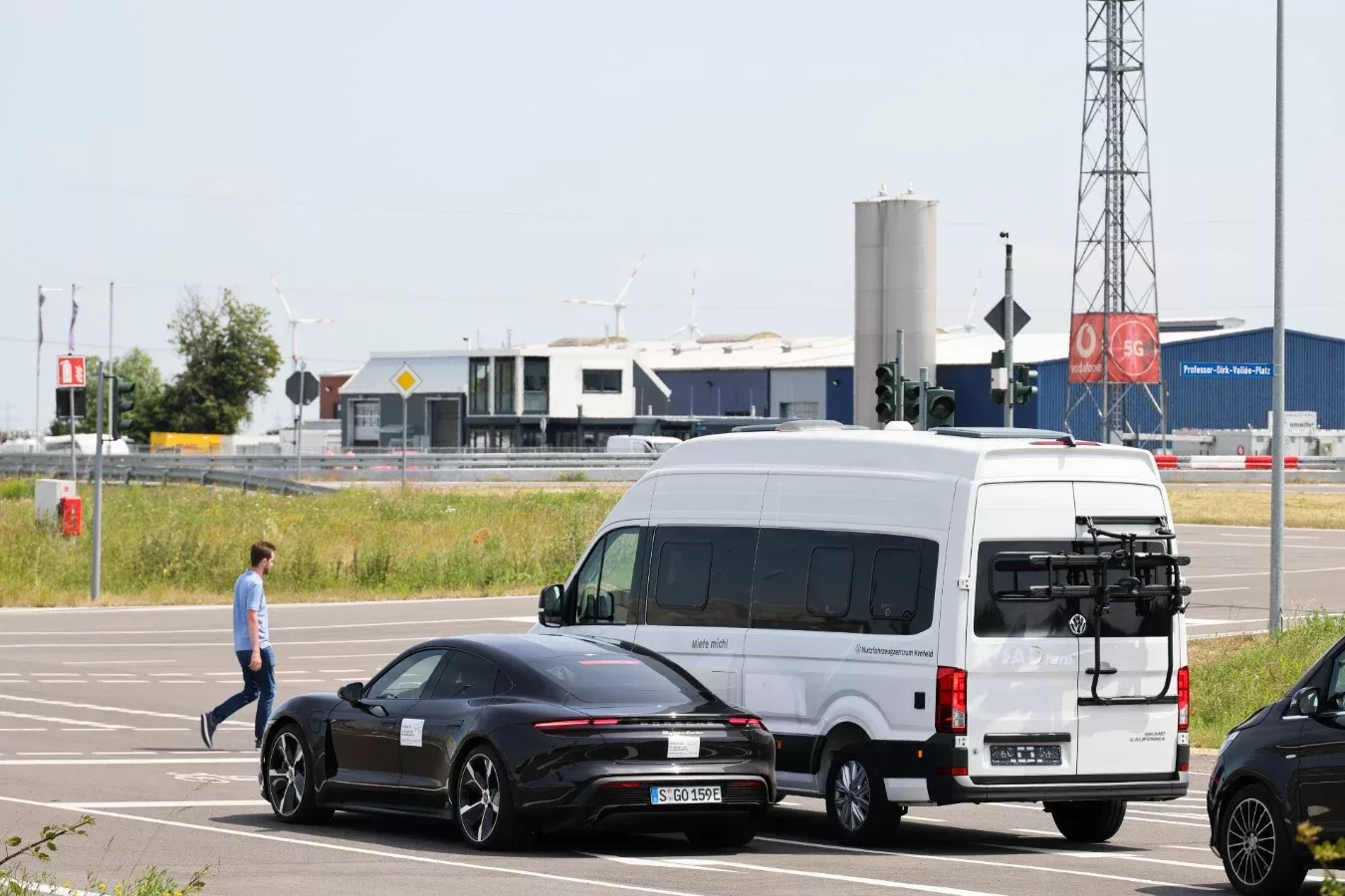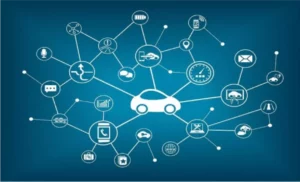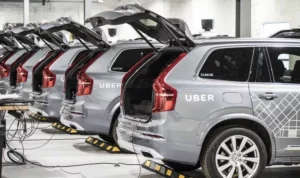HERE Technologies, Vodafone and Porsche have announced a feasibility study on road traffic safety.
The three global companies say they are working together to trial how 5G technology and highly precise location determination can improve traffic safety and reduce the number of road accidents in the future. The three companies are collaborating in the development of a real-time warning system so that vehicles and their drivers can receive hazard warnings directly, without any delay, and therefore be responded to immediately.
At the Vodafone 5G Mobility Lab in Aldenhoven, the partners are testing the real-time warning system under conditions, similar to everyday situations, for the first time.
The focus is on hazardous situations that are not visible or difficult to see for vehicle drivers, such as when the view is blocked by the traffic ahead. Captured by camera and sensor systems, using artificial intelligence and precisely localised with high-definition map and positioning technology, the data determined will be processed and evaluated directly on the roadside and on the edge of the network through Multi-access Edge Computing. In the form of dedicated alerts using 5G mobile network technology and an intelligent MQTT message broker, the data can then be transmitted without delay to road users travelling towards the hazard.
To detect dangerous situations ahead, the Live Sense SDK from HERE Technologies is used alongside HD maps and positioning technology. Integrated into consumer devices with front-facing cameras, this system uses computer vision and artificial intelligence to identify objects and changes in the behaviour of other road users or road conditions that could lead to hazardous situations. Based on this information, Live Sense SDK generates real-time hazard warnings for drivers. “Improving road safety is a key focus for us. Location technology combined with 5G and Multi-access Edge Computing enables powerful solutions that make roads safer, providing better mobility experiences for road users,” said Antina Lee from the Product Innovation team at HERE Technologies.
In many cases, data processing takes place in centralised cloud computing centres. With Multi-access Edge Computing (MEC), the computing power moves even closer to the customer – and in this case, closer to the vehicles. This saves time and enables data to be exchanged in real time. The journey that the data takes to reach the recipient is significantly shortened. As a result of 5G mobile network technology, there is also no delay when it comes to actual data transmission. This means that hazard warnings are delivered to the road user in real time with a latency of less than ten milliseconds. In addition, data that was previously processed within the vehicle will be processed outside the vehicle in the future.
“If cars warn each other about hazards in real time, human lives can be saved,” said Michael Reinartz, Director of Innovation at Vodafone Germany. “5G and data processing on the roadside help to transmit hazard warnings without delay and make road traffic even safer. We are currently trialling this under everyday conditions.”
“This Proof of Concept gives us an opportunity to conduct research in the field of 5G and test the latest technology and location services for the development of potential future products,” explains André Schlufter, who is responsible for Connectivity and SIM Management at Porsche AG.
Following the initial tests in Aldenhoven, HERE Technologies, Porsche and Vodafone plan to further optimise the real-time warning system and evaluate its potential in everyday use. Additional tests will be performed at different locations under a variety of conditions.
(Picture – HERE/Porche/Vodafone)





















